Those Darn Kids Today
Ever since I graduated from the University of Nevada in 2000, I have been working with and around young people as my profession. I worked at a program called Kid’s University where late elementary, middle, and high school students took “sampler” courses with university faculty during the summer months. I worked as a non-profit youth civic engagement program director for 20 years and I am currently an adjunct professor at a local university and research analyst for the county juvenile services system.
Throughout my career(s), I often hear a refrain about how kids today are somehow worse behaved than those of prior generations. This is not a new concern and I’d like to remind you that people have been worried about the “corruption of the youth” since at least Socrates’ time. In my own lifetime, I remember the Satanic Panic of the 80s and 90s where parents worried that Dungeons and/or Dragons and Heavy Metal was corrupting the minds of the youth.
This isn’t to say that youth never misbehave or that we should allow young people to run around willy-nilly Wild in the Streets. Rather, it is to say that we should view young people’s behavior in a realistic way and acknowledge the unique challenges they face in each generation AND refrain from having an overly kind view of how kids behaved in the past.
After all, when was the last time kids broke into your house to steal pieces of your furniture and nailed you into your home? It’s not something I’ve ever worried about, but that was not always the case. Apparently, in the early days of “Tricking” that’s what the kids were doing. It wasn’t until “The Halloween” problem of kids creating bonfires with stolen wooden items was solved by adding the “Treating” element to Halloween celebrations that those little hellions began to settle down.
I learned a bit about this sinister history watching a recent episode of Max Miller’s excellent YouTube Channel Tasting History. I’ve featured the channel before, and will again, but I almost skipped this one because the recipe was for an “Old Fashioned Vinegar Candy.” Let’s just say the thought of vinegar based candy didn’t seem appealing. Watching this episode though, my understanding of “Trick” or treating and appreciation for vinegar based candy shifted.
I will note that when I mentioned vinegar based candy to my wife, her immediate response was “oh, that’s probably like a salt water taffy where you substitute vinegar for the salt water.” She was absolutely right and once again my limited knowledge about things outside of my eclectic pop culture interests was revealed.
Weekly Film Article Cavalcade
The Lamentations of Luke Y. Thompson
I’ve decided to rage against the AI machine and to give my friend Luke Y. Thompson the respect he deserves as a genre and schlock critic. To that end, I will continue to promote Luke’s present and future reviews, but more importantly this section of the Weekly Geekly Rundown is going to be my personal equivalent of a Leonard Maltin/Roger Ebert/Joe Bob Briggs compilation book. Because I will now be including legacy reviews, my commentary will often include my thoughts on films that I’ve seen rather than the “this is how Luke’s review is shaping my expectations of a newly released film I haven’t yet seen” reactions of the past year or so.
I will also be including, if he’s done one, Luke’s review of the film I recommend in this week’s Weekly Geekly Classic film recommendation. So without further ado, here are two of Luke’s reviews.
All film titles in headers link to Amazon streaming versions when possible.
A Sound of Thunder (2005)
Luke’s Metacritic 10
Christian’s Letterboxd Rating 1/5
While a lot of novels get adapted to film, I’ve always believed that the medium was much better for adapting short stories or long form journalism articles than for lengthy books. Sure, some short stories are so tightly written that they are best served by a 30 minute or 60 minute television episode, but many are best served by an immersive hour and a half to two hour experience. If you look at film adaptations of your favorite novels, even good ones, they invariably leave out something that would have added depth and context to the conflict at hand. Whether it’s Dune, The Fellowship of the Ring, or Pride and Prejudice, all of which I think are excellent adaptations, choices were made about what to keep and what to cut.
For example, while I might not mind that Peter Jackson left Tom Bombadil out of his adaptation, I am disappointed that he left out the Barrow Wight scene. Given that this scene intersects with Tom Bombadil, cutting one requires cutting the other and the overall story looses some deeper context.
Ray Bradbury’s short story “A Sound of Thunder” is one of the most read science fiction stories and while it may not be the actual inspiration for the term Butterfly Effect which came from a 1963 paper by Edward Lorenz entitled “Deterministic Nonperiodic Flow.” That paper did not mention butterflies specifically, but it featured a visualization that looked very similar to a butterfly. Lorenz often reductively explained how his demonstration of minor mathematical rounding choices could drastically transform model predictions in weather by suggesting, “that the flap of a butterfly’s wings might ultimately cause a tornado.”1 Lorenz elaborated on these thoughts in a paper called “Predictability: Does the Flap of a Butterfly’s Wings in Brazil Set Off a Tornado in Texas?”
The term Butterfly Effect didn’t really take off until James Gleick’s best selling 1987 book on chaos theory Chaos: Making a New Science brought the term into regular conversation.
In a wonderful case of spontaneous invention, Ray Bradbury’s short story “A Distant Thunder” was published in the June 28, 1952 issue of Collier’s Magazine. It’s a story that deals with time travel and includes a reference to how a butterfly’s death influenced the future. It’s two references to the long term effects even small events can have, but Lorenz’s version doesn’t seem to be inspired by the Bradbury story even though that story came first.
Regardless of which came first, the Bradbury story is one of those classic American tales that everyone seems to read in high school. It’s a provocative story about the dangers of not being mindful of even the smallest details. It has time travel, dinosaurs, and a twist. It’s a fun story and I highly recommend buying a copy of R is for Rocket which contains the story.
It would have been a surprisingly easy story to adapt. It’s straightforward and leaves room for character interactions and should have made for an excellent film. Sadly, as Luke Y. Thompson argued in his 2005 review of the movie adaption, the people adapting the film should have taken the moral of the story more to heart. Making small changes can have ripple effects that ruin everything and the small changes that the film makers made here, especially with regard to evolutionary changes, made what could have been a fun film into something Luke and I agree was terrible.
Final Destination (2000)
Luke’s Metacritic Rating: 60
Christian’s Letterboxd Rating: 3.5
Since this film is my recommended film of the week, I won’t be sharing my own assessment at the moment and will instead focus on what Luke has to say here. While Luke’s review of the film is lukewarm at best, it is a perfect example of how being very excited about a premise can influence your initial assessment of a film. He was intrigued by the premise that fate will come and get you if you avoid it initially, but he thought the film failed to live up to the full implications of that premise. I recommend reading his full thoughts on the film, they contain some very good insights even if my rating is higher.
Courtney Howard’s View from the Center Seat
It’s the scary season and Courtney Howard is ready for it with a review of the soon to be released Salem’s Lot film on HBO’s Max platform. I put HBO’s Max platform, because the first thing I think of when I just say “Max” is Cinemax and that just reinforces what a bad idea it was for HBO to call their service Max. It’s like they are advertising the competition. Speaking of bad ideas, Courtney’s review of this adaptation of Stephen King’s much loved story makes it clear that it was a bad to model any part of the new film on Tobe Hooper’s television mini-series.
I recently watched that mini-series in preparation for my own upcoming viewing of the Max version. I enjoyed it, but the edits for commercial breaks and the limited effectiveness of most of the special effects hindered what Hooper was trying to do. You can see elements of what he would bring to Poltergeist and there are a couple of genuinely creepy moments in the Hooper version, or at least as creepy as 1979 television would allow. But there were also a lot of weird choices that detracted from the experience. Stephen King’s vampire, Straker, is a kind of avatar for King’s recurring villain Randall Flagg and is charming and disarming. He also, like Flagg, wants to destroy people by corrupting them by twisting their love for others into evil action. This theme occurs a lot in King’s books ranging from the Gunslinger series to Needful Things to The Stand to Pet Semetary. Evil seeks to corrupt love into something perverse. It’s a powerful theme in the book and Hooper captured a little of it, but his desire to focus on referencing Murnau’s Nosferatu run counter to this narrative thrust. As Howard points out, the new version sets the movie in the same era as the show and also has Straker “Murnau out.”
Courtney was disappointed in the new version which makes me a bit wary as I prepare to watch it. She is harder on the Hooper version than I am, so maybe there’s some hope that I’ll enjoy it. Then again, the cast in the Hooper version is ridiculously good for a TV show at the time. It features James Mason, Bonnie Bedelia, Kenneth McMillan (Lynch's Baron in Dune), David Soul and only James Mason is phoning it in.
Glimpses from the Substackosphere and Bloggerverse
My friend and super prolific game designer recently purchased a copy of ICE’s 1990s pirate themed role playing game Run Out the Guns and reviewed it for his blog. He’s a big fan of the game and hopes that someone will resurrect it some day. There are a lot of lost games out there and like Alan, I’d like to see more of them in print again.
A moment I’ve been waiting for a while is about to happen. Dynamite Entertainment is close to shipping their Fire & Ice board game. It’s a tactical skirmish wargame inspired by the Frank Frazetta and Ralph Bakshi animated film of the same name. It was funded via Kickstarter a few years ago and it looks like they managed to get a good product out of it, at least visually. I’ll have to wait until it is published to see how it plays.
Those who’ve been here for a while know that I have been slowly but surely exploring the history and development of various character classes in Dungeons & Dragons here at Geekerati. I’ve done a three part (so far) investigation of the Ranger Class and plan on doing all of them. Given my love for Conan, and my recent post on OD&D Conan, it’s only a matter of time before I approach the Barbarian class. Until I do though,
takes a look at the Barbarian class featured in White Dwarf during that magazine’s heyday. This Barbarian was published in 1977 and I wish it had greater influence on what came after. It’s an interesting look and you should check it out.As we approach the scary season Richard Iorio, the designer of the excellent Colonial Gothic role playing game, has a post with a number of excellent reading recommendations. In this case, academic examinations of H.P. Lovecraft. Given the modern academy’s current obsession with Critical Theory, I’ll likely roll my eyes at some of them just as I would if they were “New Criticism” or “Reader Response” approaches. None of these academic fads have any long term appeal to me as two of them know what they are looking for before they engage with the text and the third celebrates “the death of the author.” That’s not my approach. I see to celebrate as I critique. Find what was intended, what worked, and what didn’t. That said, it’s always interesting to see what the scholars are focusing on and I’m a big fan of Richard’s so you should check his post out.
Role Playing Game Recommendation (Star Frontiers)
When TSR released the Dungeons & Dragons role playing game in the early 1970s, they created a new mode of gaming the role playing game. What is interesting is that they failed to rapidly follow up the success of their "fantasy" themed role playing game with a succession of game releases in other genres. While many of the first role playing games were shallow imitations of D&D...some were even Vacuous to use Gygax's terminology, it was other companies who first entered the marketplace with non-fantasy RPGs.
It wasn't long after the publication of D&D that Ken St. Andre drafted a set of rules for a science fiction themed role playing game entitled Starfaring, and Marc Miller published Traveller in 1977. Where Starfaring was whimsical, and is a quintessentially 70s artifact that feels a bit like John Carpenter's Dark Star the rpg, Marc Miller's Traveller set the standard for science fiction rpgs. In fact, Traveller truly set the standard for any rpg product line that was going to compete in the rpg marketplace. Marc Miller's creation had a large following among the Space Gamer readership, and the publication of support materials for the game led to the growth of FASA -- one of the classic old RPG companies.
Even though Traveller established science fiction as a viable genre for role playing games, it took TSR five years after the release of Traveller before they released their SF entry into the RPG marketplace, the Star Frontiers game. When Star Frontiers came out, there were those who tried to compare it to Traveller, but I have always felt that the comparisons were slightly off base as they represent different kinds of SF. Traveller's rules and back story, as well as the overwhelming influence D&D had on the early RPG market, gave the game a specific feel. Characters created in the game are typically former military who are now retired, or as James Maliszewski has pointed out a good many were former Mercenaries. Traveller campaigns had narratives along the lines of the Firefly television show, though it would be more chronologically accurate to say that Firefly has a Traveller feel to it. Traveller's own backstory was heavily influenced by Asimov's Foundation series with it's dying empire. Traveller campaigns were often gritty SF adventures filled with mercenaries and retired Imperial Officers spanning the Spinward Marches in pursuit of wealth and notoriety.
The D&D influence could also be seen in many Traveller campaigns, where players essentially wandered around the galaxy as pirates raiding Imperial space ships for their loot. This isn't to say that all Traveller campaigns were "spacey dungeon crawls," the official adventures certainly weren't, just that some people played it that way.
The science fiction background of Star Frontiers was quite different from that of Traveller. Where Traveller took place in a galaxy dominated by an interstellar Empire in a fairly settled area of the galaxy, Star Frontiers took place on the Frontier of civilization where a major corporation "Pan Galactic Corporation" -- later multiple corporations -- was sponsoring the exploration and attempting to profit. The Pan Galactic Corporation had come into existence to promote exploration and trade among four major alien races -- Human, Vrusk, Dralasite, and Yazirian. These races have only just begun to interact with one another, and have banded together on the Frontier of explored space. At that Frontier, they soon discover a new enemy...an enemy that threatens to destroy any civilization that chooses to explore the Frontier. That enemy is the Sathar, a wormlike race with hypnotic powers on the edge of explored space. The exploring races have only recently completed their First Sathar War, during which they formed the United Planetary Federation, and are now having to deal with terrorist attacks and sabotage by agents of the Sathar...agents from among their own people. In response to the Sathar's new warfare strategies -- espionage and terrorism -- the UPF has formed the Star Law Rangers who track Sathar agents and attempt to foil their plots.
The universes of the Traveller rpg and the Star Frontiers rpg have parallels in history. One is of an empire in decline, the other is of mercantilism on the rise. The tones of the settings are very different, but so are the rules. Where Traveller characters are retired from former professions and already have a number of skills at which they are proficient -- especially if the characters were generated using the Mercenaries or High Guard supplements -- Star Frontiers characters are relatively inexperienced. Even in the Expanded Star Frontiers rules, the characters have training in only two major skills -- and that training is at the lowest level. The characters start near penniless and are in need of employment. Players can be thankful that the Star Law Rangers are always looking for recruits, that the corporations are always looking for someone willing to risk Sathar attack while exploring planets on the Frontier, and then there's always the possibility of playing a group of Sathar agents...
Star Frontiers is a game that has a background that is rich in ideas for development...but it is also a game where one has to dig in order to find these ideas. Trying to find out the history of the Star Frontiers universe is not an easy task. Prior to the publication of Zebulon's Guide to Frontier Space there was not a clear timeline of the development of civilization. One had to induct heavily from the introduction in the Basic Game rule book, read and reread the racial descriptions, and scour every module for minutiae to get a sense of what was going on. Zeb's Guide did some of the work for you, as it advanced the timeline to a point after the modules and to a point where the Sathar had developed mind controlling organisms that latch on to the victim's back to take over the nervous system (fans of Puppet Masters and Iron Empires take note). Taking the Frontier beyond an outline and into a fleshed out campaign setting takes time, but it is worth it.
I've read the rules many times, but finding a group to play can be hard. It's an easy system to learn and I've personally designed an even simpler version of their Basic Rules with my own Extremely Basic Rules (link above), but if I find a group who is interested I might just use the setting and play the game with another game's rules set. Maybe d20 Modern/Future or Everyday Heroes, they did write a Star Frontiers setting section for the d20 Future book and had a web expansion with stats for the Sathar, maybe Alternity, or Savage Worlds. Heck...I might just use the Traveller system for it. It's a great game too.
Music Recommendation
Last week, I featured some male vocalists who blew my mind with their talent and this week I’m taking the time to highlight some of the most beautiful female voices I listen to on a regular basis.
While they never seemed to catch on as much as I thought they deserved, The Sundays produced beautiful song after beautiful song. Harriet Wheeler’s voice is haunting and alternates between rich deep tones and lilting high notes that create a resonant emotional experience. I think one of the reasons the band doesn’t get the love they deserve is that they are “too pop” for the alternative crowd and too alternative for the pop crowd. Regardless, I adore their combination of folk and alternative musical sensibilities.
Two of my favorite songs are Here’s Where the Story Ends and Summertime. I particularly like the vocal layering on Summertime. It’s a demonstration of what modern “perfect music” should be attempting instead of using autotune to create layers. The harmonizing layers of real vocals add the depth they are seeking.
One cannot mention The Sundays without thinking about their “more alternative” counterpart The Cocteau Twins. Like The Sundays, The Cocteau Twins combine folk melodies and vocal techniques with alternative and rock undertones. In the song Carolyn’s Fingers, you can hear the simultaneous influence of traditional folk songs with surf rock guitar riffs that evoke The Jesus and Mary Chain and The Chantay’s classic song Pipeline.
Where Carolyn’s Fingers combines folk and surf rock, Blue Bell Knoll opens with what sounds like a Harpsichord akin to a Baroque classic. As always Elizabeth Fraser’s voice haunts the listener and brings to mind the legends of the Lorelei and are what I imagine the Songs of Elfland sound like. The classically and folk influenced melody blends effortlessly with a bassline that is similar to what one might expect from a Bauhaus or The Cure (see below) song.
Because I’m a fan of both the Robin of Sherwood television series and the singer Enya, I stumbled across an appearance by the band Clannad on a German television show that featured Enya’s vocals. While Enya had some major hits, deservedly so as songs like Caribbean Blue demonstrate, in the 1990s that displayed her command of folk and pop, there is a wonderful charm to hearing her beautiful voice singing undiluted folk sounds. It was also nice to hear Clannad perform an unfamiliar song. An Tull is a lovely song.
Okay, let’s just say that the 1990s were a time filled with wonderful female singer songwriters who get nowhere near the recognition they deserve. As I’ve been listening to these songs while curating them, I’m comparing them to some modern female vocalists. The modern singers have a lot of talent, to be sure, but in many of the songs there’s a lack of emotional investment in the newer songs whereas there’s a raw sincerity to a lot of the songs I’ve been streaming this week. That sincerity hits you like a freight train with the last artist I’m highlighting this week, Sarah McLachlan.
While the theme of this week’s music recommendation is female vocalists with remarkable voices, it’s not every day/week that The Cure releases a new song. I came to the surprising realization some years ago when my car was broken into and all my CDs were stolen that I owned a large volume of The Cure music, so much that it became clear to me that they are my actual favorite band. I might not have thought of them that way, but the shear volume of their music I owned and felt a need to replace taught me otherwise.
Their latest single Alone touches combines traditional The Cure melodies vibrato guitar riffs with a Pink Floyd-esque driving melody all blended together in a layered style that evokes the best of Shoegaze. While it took me a moment to get what Robert Smith was doing here, the eventual effect was that this song hit me as hard as Disintegration.
According to an interview Smith did with NME in 2022, the album channels all the emotions he felt in recent years responding to the changed world. To quote directly he stated, “I’ve been more privileged than most, but lockdown and COVID has affected me in as much as I’ve lost an entire generation of aunts and uncles in under a year. It’s things like that which have informed the way I’ve been with the record.”
I’m an extrovert. I need human connection to recharge my emotional batteries. I was able to handle lockdown thanks to family and a regular remote D&D game I ran, but I wasn’t able to handle the first year post lockdown. My job had been eliminated as the Foundation’s Board redirected the mission of the non-profit in response to COVID. It made sense, but it also meant that I was without employment for almost six months just as the world was reopening. My wife would go to work and I would walk our daughters to school. Then, I’d be alone and it was unbearable. Alone is a powerful song that was exactly what I needed to hear because it shows me that I only thought I was alone. Other people were alone too.
Film Recommendation (Final Destination)
As I suggested above in my Lamentations of Luke Y. Thompson, this week’s film recommendation is the 2000 teen horror film Final Destination. The film was released in the peak teen horror era, an era that saw films like The Craft, The Faculty, Teaching Mrs. Tingle, I Know What You Did Last Summer, and so many more films. It was as if Gen X were representing the death of their teen years in filmic form.
Like many films in the genre, this movie features a lot of actors who would go on to later and greater success. Closest to home is Ali Larter who has recently moved to Idaho to enjoy the wonders of the Mountain West. I’ve been a fan of Larter’s for some time and her performance in this film is fairly strong.
All of the performances of the actors though pale before the real star of the film, the Rube Goldberg devices that death uses to ensure a person meets their real fate. The gimmick is so effective that you find yourself looking around the set in every scene to see what might just lead to the next death. Some times the gimmick is obvious, and a couple times too obvious as the director hangs a lantern on it, but sometimes it is really inventive. The film uses a lot of digital effects in subtler ways than many modern films and I think it’s a fun ride and a great way to continue our scary movie marathon. This also happens to be a scary movie of the kind I can watch with my wife.
Dizikes, Peter 2011, “When the Butterfly Effect Took Flight.” MIT Technological Review (Retrieved September 27, 2024).
Yes, that Kathleen Kennedy. While she was an Executive Producer here (because Amblin was the Production Company), she was the full producer on Arachnophobia, Hook, Jurassic Park, Twister, Seabiscuit, and The Sixth Sense (among a host of other excellent films). I may not like all the output during her Lucasfilm tenure, but she produced a big part of my childhood.
As a side note, looking up her credits on IMDB to make sure I wasn’t inaccurate let me know that my wife’s Kathleen Kennedy number is 1 (assuming 0 is working directly with her). I already knew one way it was a 1 since my wife worked for David Kirschner, but this is an even better connection. Matt Mullins, who played the lead in Jody’s student film Freshmyn, was Hayden Christensen’s stunt double in Ahsoka. He’s also William Zabka’s stunt double in Cobra Kai which makes me extremely happy. Matt was a really nice guy and a hard worker on the film. His dream was to star in martial arts films, but those were on a downturn just as he was breaking in. Looks like he’s getting to experience a little of that dream.





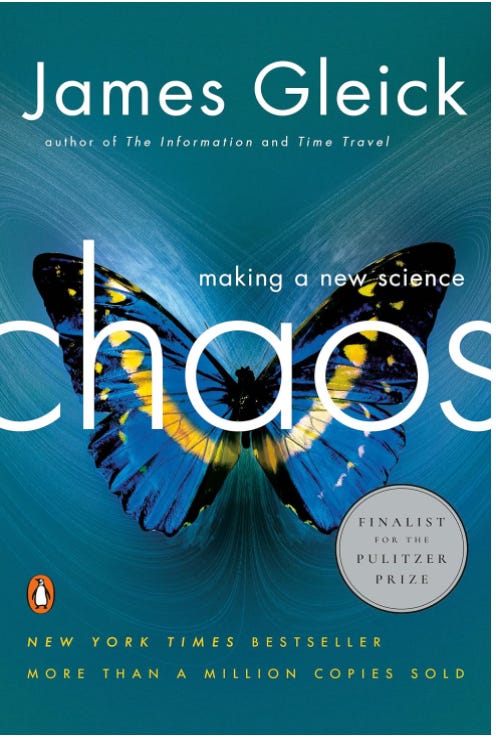
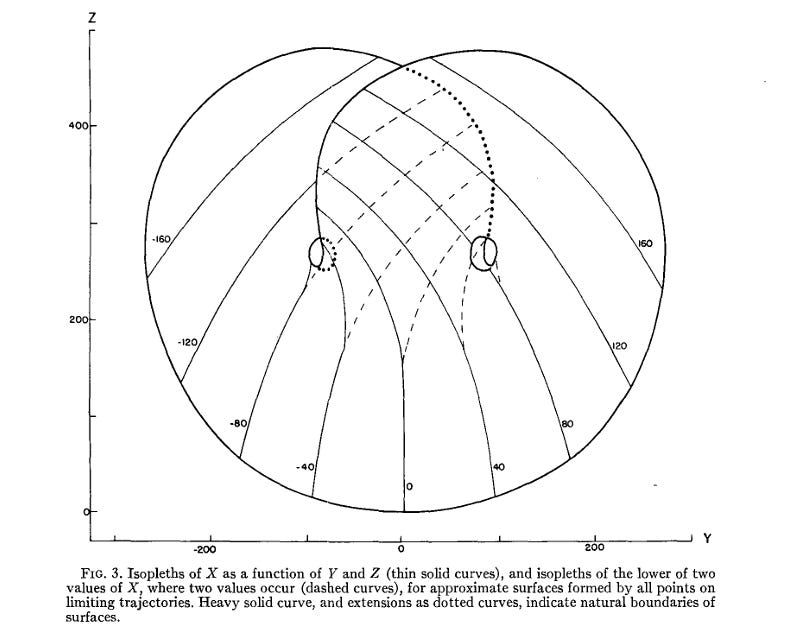
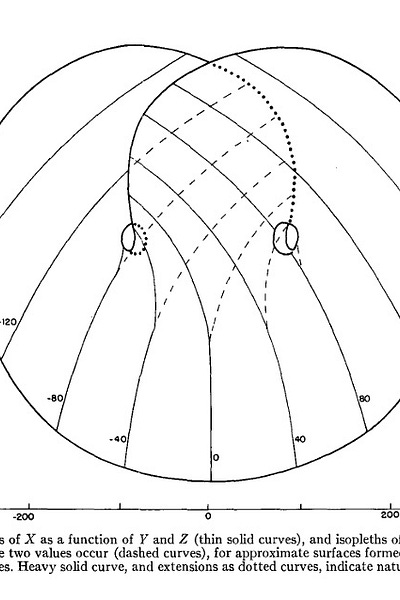
![Run Out the Guns [Book] Run Out the Guns [Book]](https://substackcdn.com/image/fetch/w_1456,c_limit,f_auto,q_auto:good,fl_progressive:steep/https%3A%2F%2Fsubstack-post-media.s3.amazonaws.com%2Fpublic%2Fimages%2F6578a420-9a3c-4562-8081-08c0c3a6bf7b_382x475.jpeg)





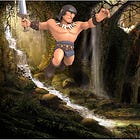


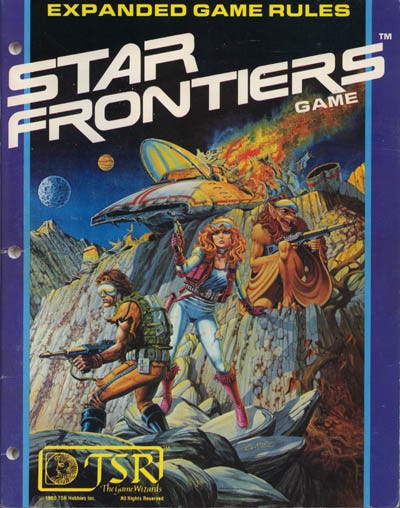
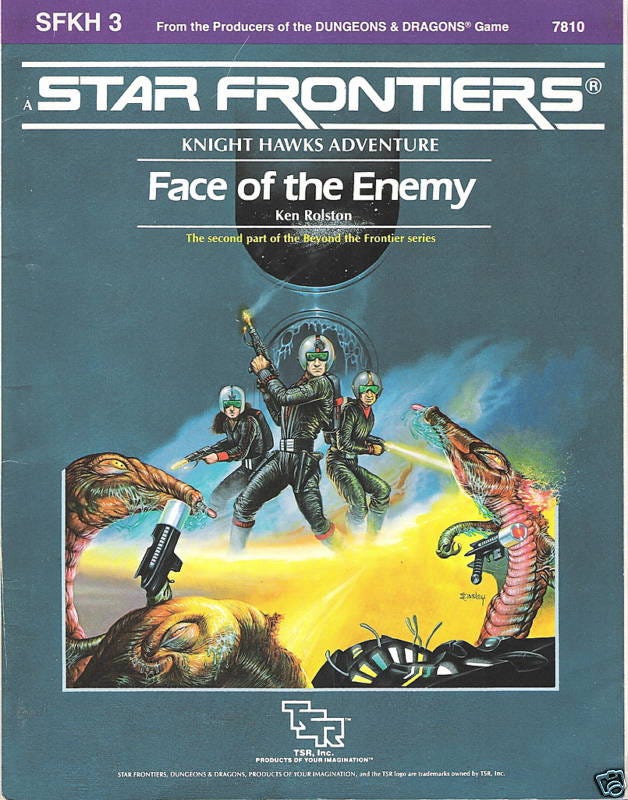
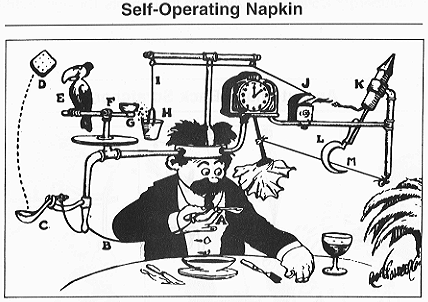
WRT HBO and Cinemax, weren't they partners rather than competitors? I recall them coming bundled together, while TMC and Showtime would have all the movies they didn't have.